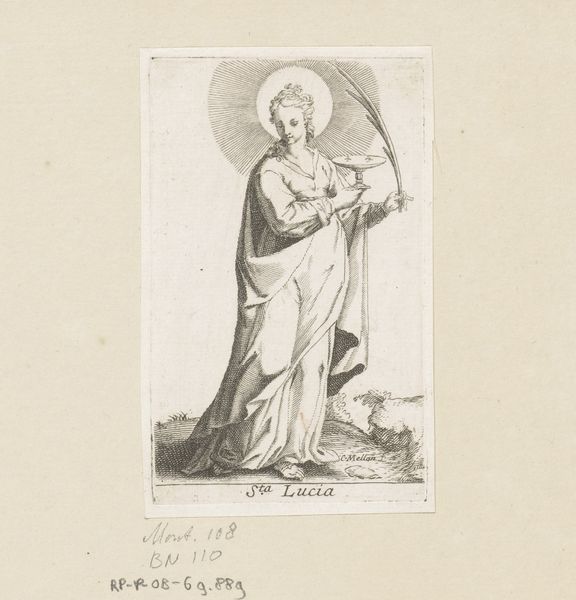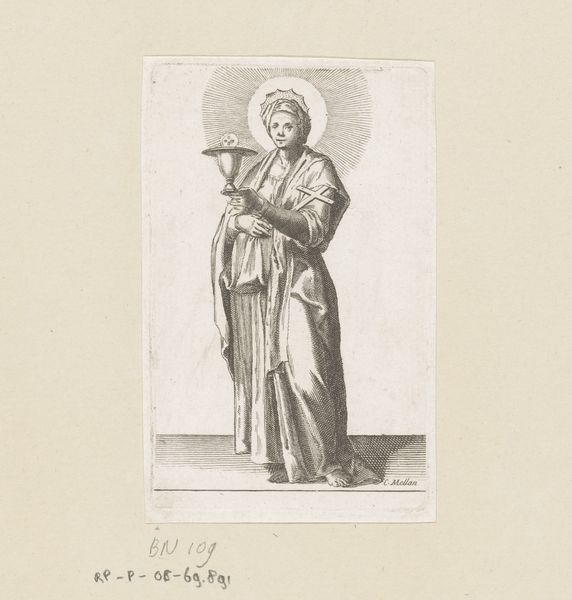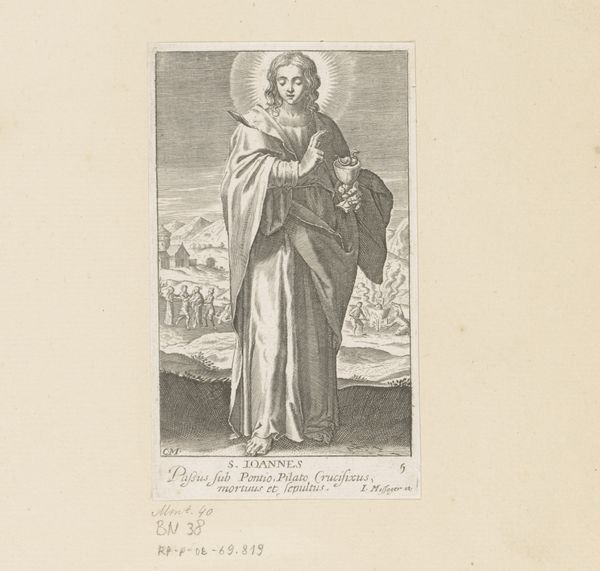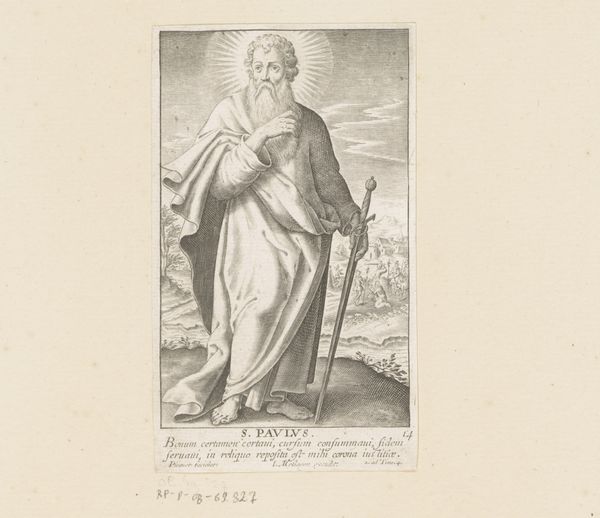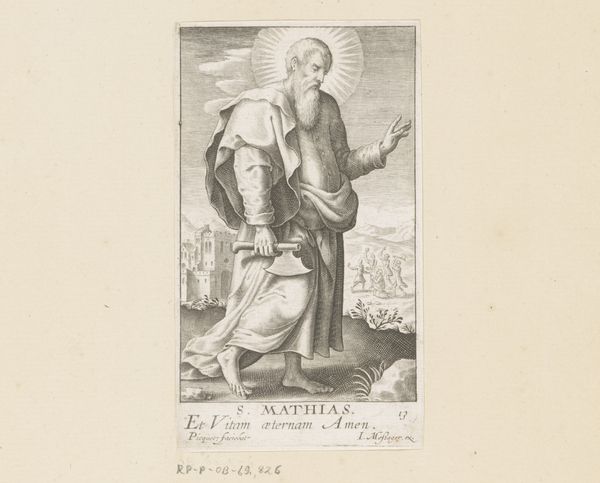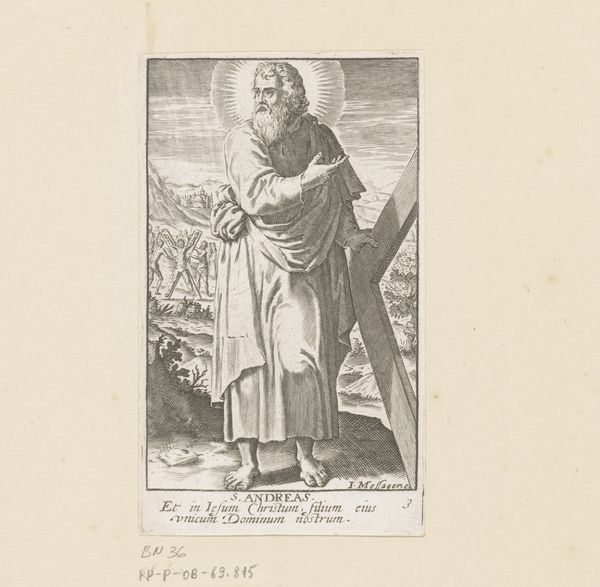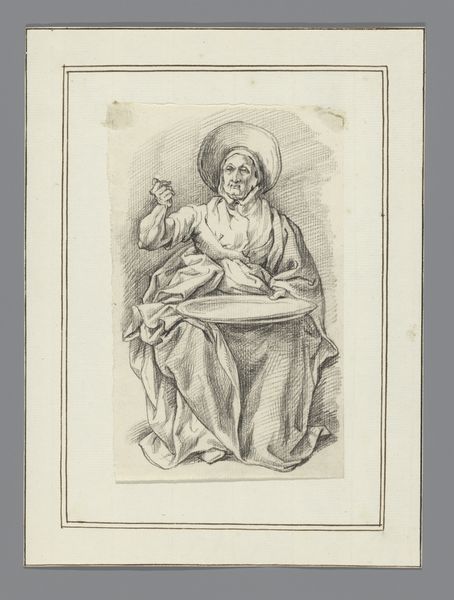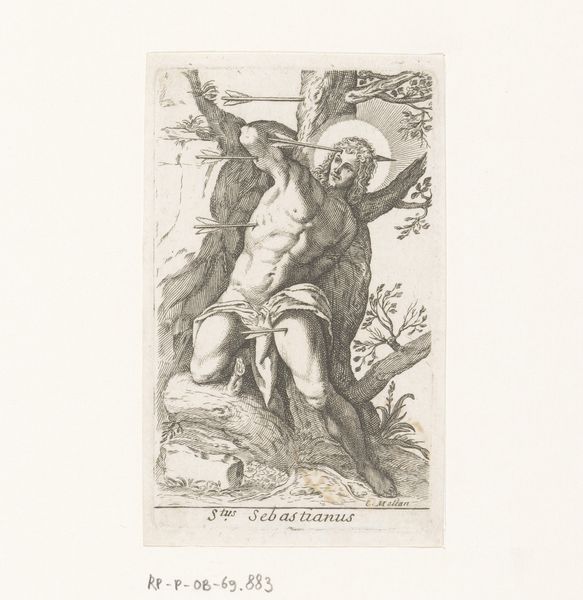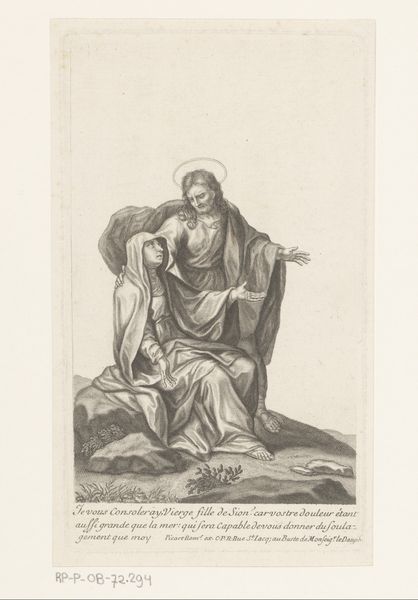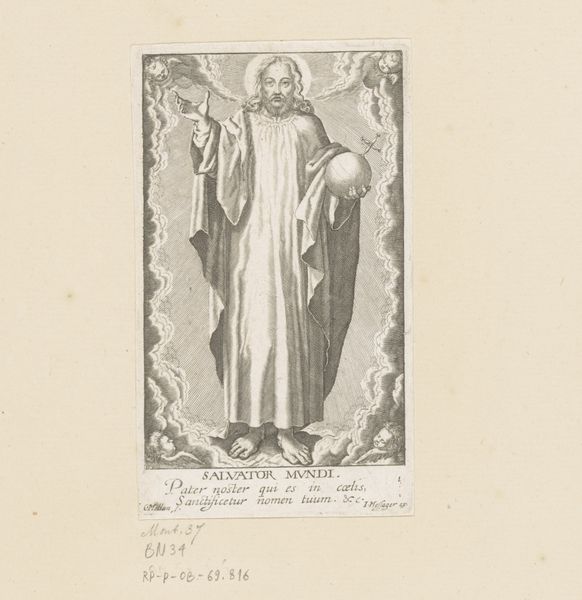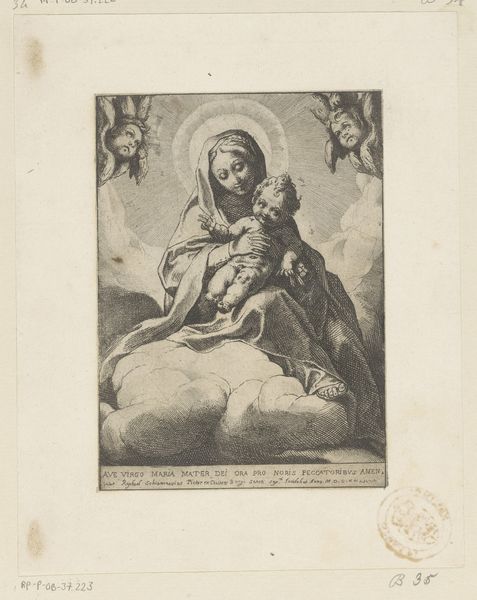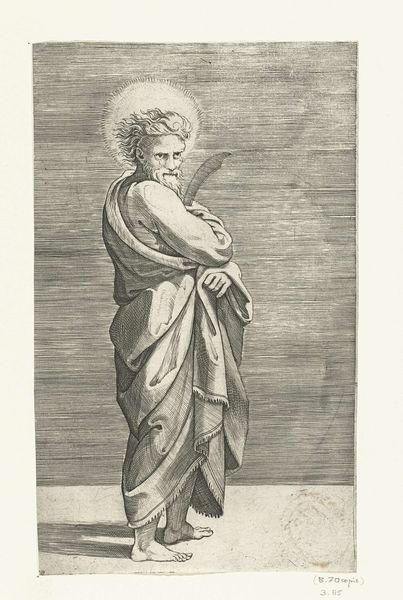
engraving
#
portrait
#
baroque
#
figuration
#
line
#
history-painting
#
engraving
Dimensions: height 95 mm, width 59 mm
Copyright: Rijks Museum: Open Domain
This is Claude Mellan’s "H. Apollonia," an engraving made sometime in the 17th century, now held at the Rijksmuseum. Look closely at how Mellan uses line to create a sense of form. Notice how the composition is dominated by the figure of Saint Apollonia, her presence emphasized through the intricate and delicate lines which define her draped clothing and serene expression. The textures are implied through varying densities and directions of the engraved lines, a testament to Mellan's skill in suggesting depth and volume. Mellan was celebrated for his virtuoso technique of using a single line that swells and diminishes to describe forms. Semiotically, the light radiating from Apollonia’s head acts as a signifier of divinity. Note the subtle contrast between the smooth halo and the detailed rendering of her face and garments. The act of engraving itself—the precise, controlled cutting into the copper plate— mirrors the discipline and devotion associated with religious iconography. Consider how Mellan’s linear technique embodies the era's fascination with clarity and precision.
Comments
No comments
Be the first to comment and join the conversation on the ultimate creative platform.
